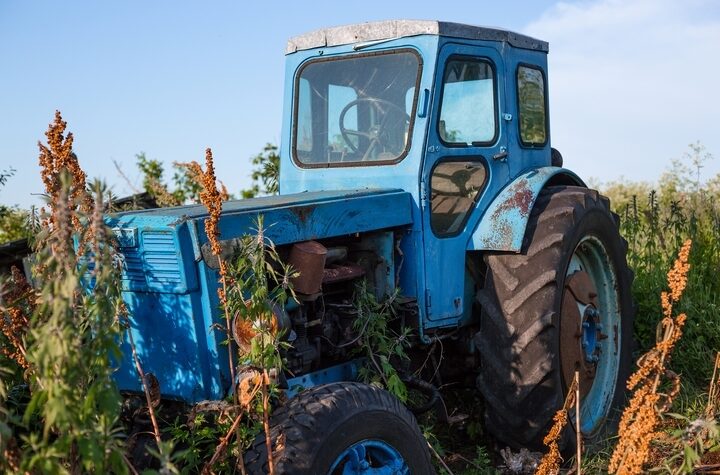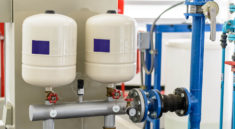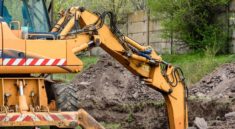To do everyday farm work, purpose-built agricultural vehicles are a necessity. They are used to optimize productivity and complete rudimentary tasks, such as working the soil, harvesting, monitoring and managing livestock, and transportation. A farmer can’t get by without several key vehicles, regardless of whether they are a small-scale homesteader, running a mid-size farm, or are a part of industrial-level farming operations.
Of the many out there, here are the most important types of farm vehicles and why they’re considered staples of farming life.
Type #1: Farm Tractors
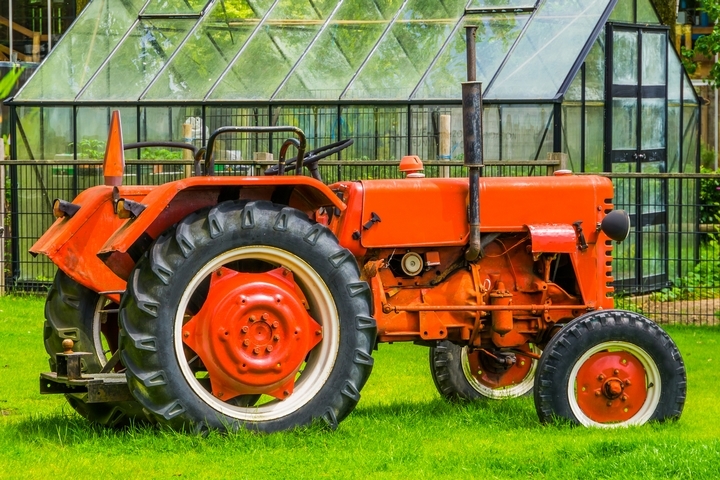
Tractors are the single most common farm vehicle you have. They essentially do the work that horses used to do hundreds of years ago. Tractors are multi-use instruments used in plowing, tilling, seeding, and harvesting. Many attachments will add to what a tractor is capable of, i.e. plow attachments, cultivators, and mowers. Tractors also come in all shapes and sizes.
Two-wheeled tractors
Two-wheel tractors use an operator that walks behind to direct and operate them. They’re often common to small hobby farms with low acreage.
Compact tractors
Compact tractors are a smaller version of a large tractor, often used on smaller farms, i.e. vineyards, fruit farms, and nut farms, to perform similar tasks and light-duty work while navigating around trees.
Two-wheeled drive tractors
Two-wheel drive tractors are used on medium-sized farms for plowing, harvesting, and operating different farm implements.
Four-wheeled tractors
4-wheel drive tractors are perfect for soft or muddy fields. They are very powerful and large by design.
Row crop tractors
Row crop tractors can drive in the furrows between the rows of crops. Its purpose is to minimize crop damage in seeding, harvesting, and weeding.
Track tractors
Track tractors do not have wheels and are driven on tracks. They are best for where the terrain is difficult to drive on and where a regular tractor may get stuck. Track tractors are generally slower in their drive. However, their purpose is not to speed.
Industrial tractors
Industrial tractors are the most expensive and largest type of tractor, capable of being outfitted with interchangeable attachments, including claws, front-end loaders, and forklift tines. The advantage of an industrial tractor is that it’s one vehicle to do several jobs in an industrial farming environment.
Type #2: Combines
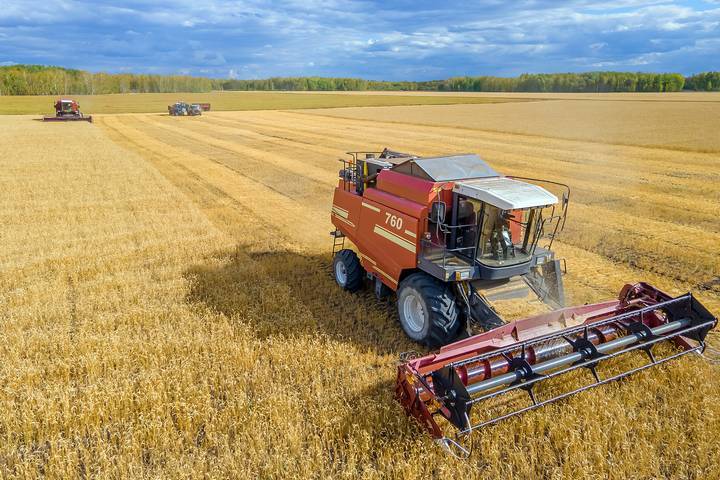
Grain farmers use a combine harvester. A combination is meant to harvest crops like wheat, corn, and soybeans. They reap, thresh, and winnow, as in they cut the plant, separate the edible parts from the non-edible parts, and separate the light chaff from the grain. Combines comprise a system of gears, blades, belts, and wheels to convert cereal crops into grain.
Type #3: Seeders
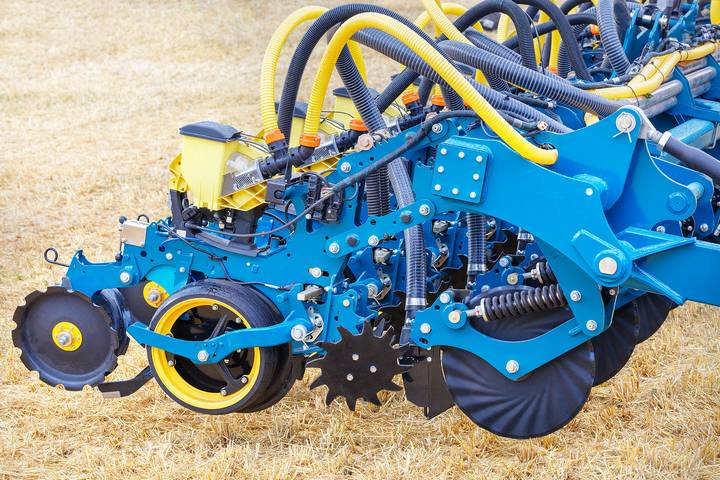
Seeders sow seeds. Like tractors, you have a diverse range of seeders, such as broadcast, precision, and air. All seeders carry a drum or trough with seeds ready to be deposited in the fields. They can be programmed to distribute at set intervals to ensure a plowed field is properly covered, and crops are not overcrowded.
Type #4: Spreaders
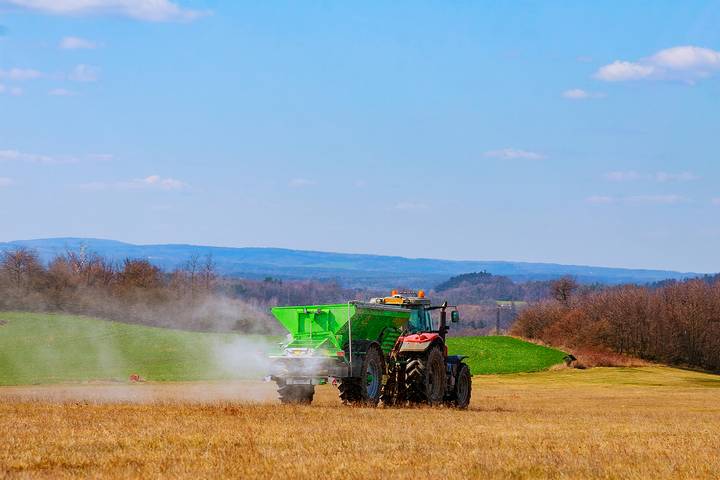
Spreaders spread fertilizer, manure, and similar materials across the field. They may be an attachment added onto a tractor or towed behind. Some spreaders, however, are self-propelled vehicles, especially among large farming operations. A spreader can be calibrated to distribute different grain-size fertilizers with ease.
Type #5: Utility Terrain Vehicle
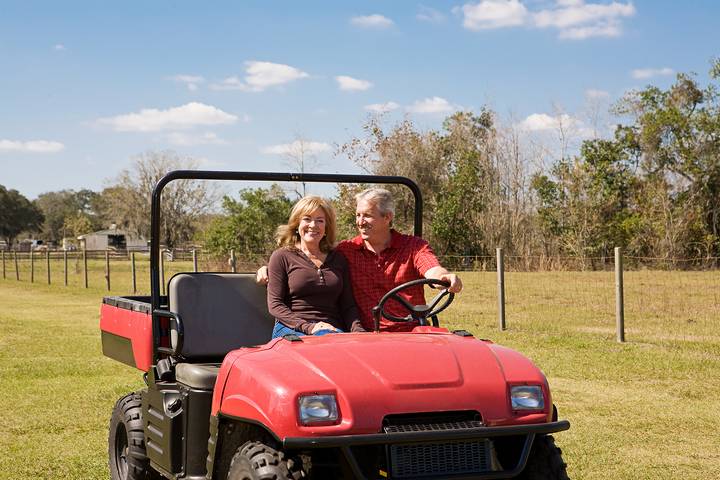
A UTV is similar to an ATV but has a loading bay. This is a major asset on any farm, able to transport injured animals, take feed out to the fields, and help with cleaning. If you hunt or fish on your property, some farmers also use UTVs. They can carry a heavy payload, are easy to maneuver, and make for a very versatile vehicle to have at one’s disposal.
Type #6: Balers
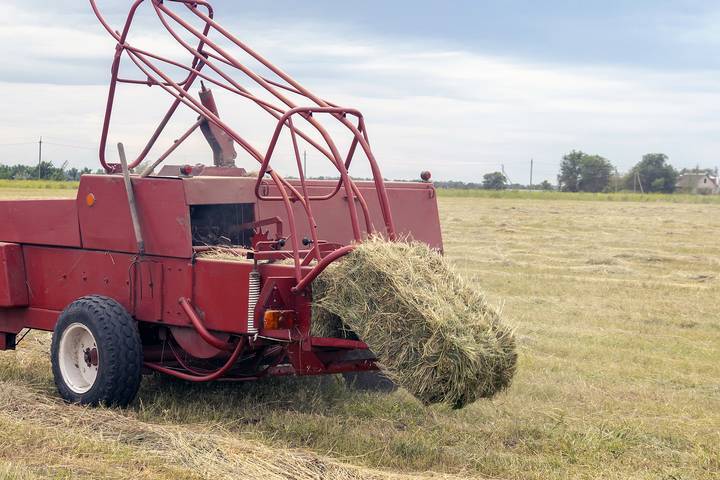
A baler compresses hay, stray, and crops into bales for short-term storage or transport. There are small hand-operated balers, but the larger, self-propelled balers are more popular. A baler is equipped with either twine or wire. This ties the bales as the balers are put to work. After depositing them in the field, the bales can be picked up by a second vehicle.
Type #7: Sprayers
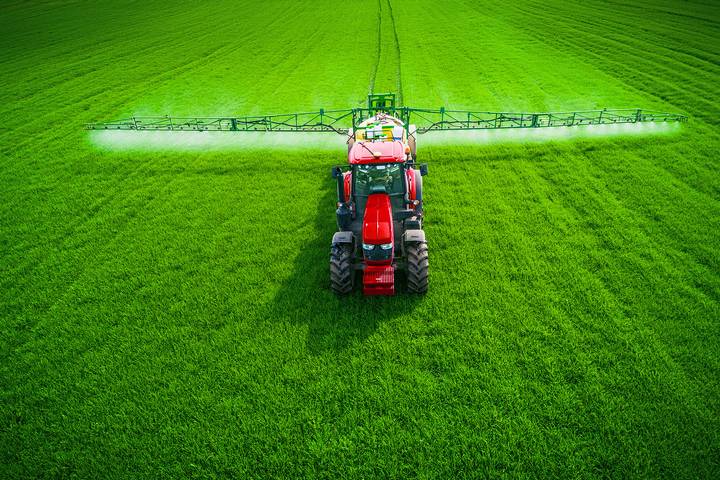
A sprayer is a farm vehicle that spreads liquid fertilizer, insecticides, pesticides, herbicides, or chemicals on crops. Sprayers are also sometimes used to water crops as an alternative to standard irrigation methods. This is a diverse category of vehicles, with common sprayer vehicles being boom sprayers, air-assisted sprayers, and mist sprayers.
Type #8: Autonomous Vehicles
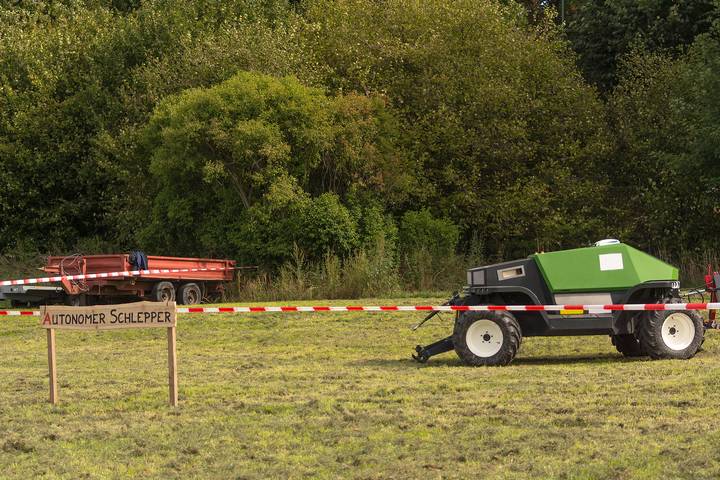
Autonomous farm vehicles are a growing category. They can perform pre-planned farming tasks, such as tractors fitted with specific attachments or implements. They use a combination of boundaries defined in a field by GPS and software, making it possible to do specific tasks, including plowing, harrowing, seeding, and harvesting.
While some human supervision is required to ensure the vehicle is properly programmed and equipped with the right implements or materials, i.e. seeds, the future of farm vehicles is certainly learning towards more autonomous use.

